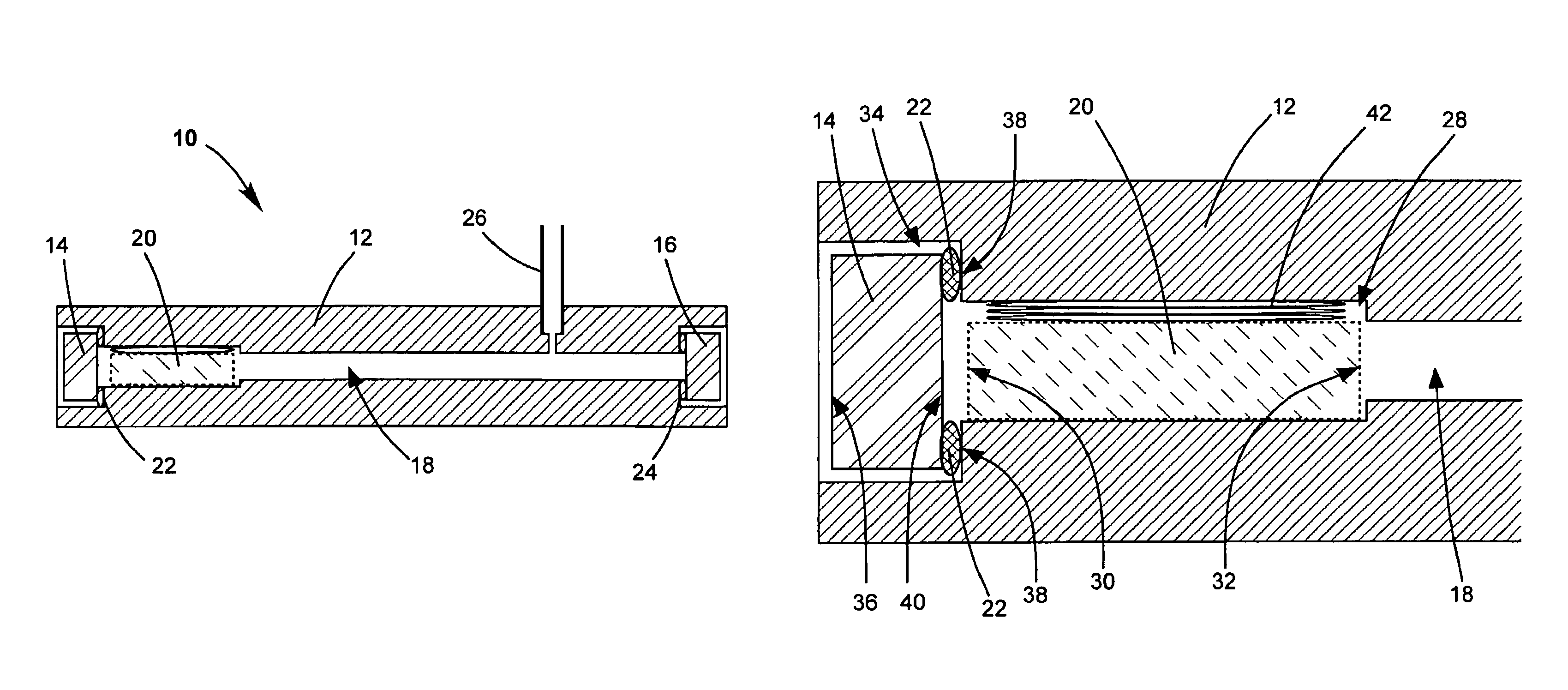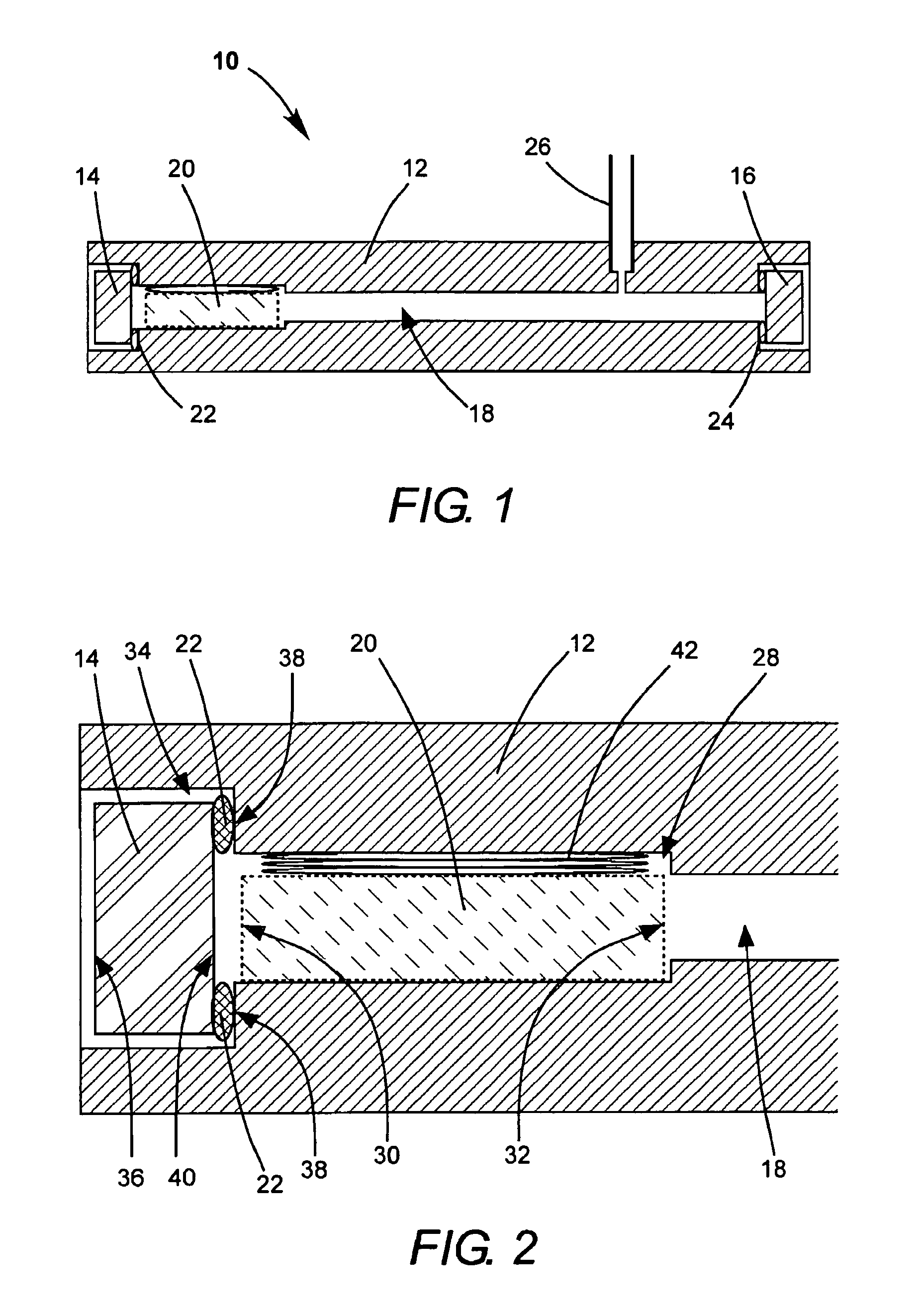Vacuum cell for optical components
a vacuum cell and optical component technology, applied in the field of vacuum cell for optical components, can solve the problems of loss of transparency, deformation of optical quality of polished surfaces of hygroscopic crystals, and problems such as the loss of transparency
- Summary
- Abstract
- Description
- Claims
- Application Information
AI Technical Summary
Benefits of technology
Problems solved by technology
Method used
Image
Examples
Embodiment Construction
[0022]Referring now to the drawings, wherein like features are designated by like reference numerals, FIG. 1 is a cross-section view schematically illustrating one preferred embodiment 10 of a vacuum cell in accordance with the present invention. Cell 10 includes an elongated, rigid enclosure-body 12, preferably of a metal such as kovar, stainless steel, or non-anodized aluminum or an alloy thereof. Optical access to the cell is provided through an optical input window 14 and an optical output window 16. Body 12 is completely penetrated by a through-passage 18 to allow propagation of light through cell 10 and particularly through an optical component 20 enclosed therein, here, an optically nonlinear crystal. By way of example, optically nonlinear crystal 20 may be a crystal of as potassium KDP, BBO, LBO, CBO or CLBO. A characteristic common to these particular materials is that all are water-soluble, and in general they are hygroscopic, especially CBO and CLBO. Input window 14 is lo...
PUM
| Property | Measurement | Unit |
|---|---|---|
| wavelength | aaaaa | aaaaa |
| length | aaaaa | aaaaa |
| length | aaaaa | aaaaa |
Abstract
Description
Claims
Application Information
 Login to View More
Login to View More - R&D
- Intellectual Property
- Life Sciences
- Materials
- Tech Scout
- Unparalleled Data Quality
- Higher Quality Content
- 60% Fewer Hallucinations
Browse by: Latest US Patents, China's latest patents, Technical Efficacy Thesaurus, Application Domain, Technology Topic, Popular Technical Reports.
© 2025 PatSnap. All rights reserved.Legal|Privacy policy|Modern Slavery Act Transparency Statement|Sitemap|About US| Contact US: help@patsnap.com



